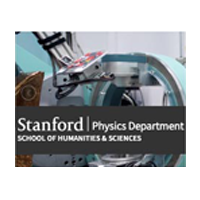
Photovoltaic Restoration of Sight in Retinal Degeneration
Zoom Meeting ID: 914 0035 5515; Password: 285588. Spilker 232.
ABSTRACT: Retinal degeneration leads to blindness due to loss of photoreceptors, while neurons in the inner retinal layers are relatively well preserved. To restore sight, we developed a photovoltaic substitute for the lost photoreceptors, which convert light into pulsed electric current, stimulating the second-order retinal neurons. Visual information captured by a camera is projected onto the retina from augmented-reality glasses using pulsed near-infrared (~880nm) light. This design avoids the use of bulky electronics and wiring, thereby greatly reducing the surgical complexity and allows scaling the number of electrodes to thousands.
Preclinical studies demonstrated that prosthetic sight with subretinal implants preserves many features of natural vision and spatial resolution matching the pixel pitch. Clinical trials in patients with Age-related Macular Degeneration demonstrated prosthetic vision with a letter acuity closely matching the 100mm pixel size of the first-generation implant. Remarkably, central prosthetic vision is perceived simultaneously with the peripheral natural vision.
To reduce the pixel size while providing sufficiently deep stimulation of the inner retina, we are developing various strategies for shaping the electric field, including current steering and 3-dimensional electrodes. Grating acuity with 75, 55 and 40mm pixels in rats matched the pixel pitch, while with 20mm, it reached their natural resolution limit of 28mm. In human eye, 20mm pixels may provide acuity exceeding 20/100. Ease of implantation of these wireless arrays, combined with high resolution, opens the door to highly functional restoration of sight.
Biography: Daniel Palanker is a Professor of Ophthalmology and, by courtesy, of Electrical Engineering at Stanford University. He received PhD in Applied Physics in 1994 from the Hebrew University of Jerusalem, Israel.
Dr. Palanker studies interactions of electric field with biological cells and tissues, and develops optical and electronic technologies for diagnostic, therapeutic, surgical and prosthetic applications, primarily in ophthalmology. In the field of electro-neural interfaces, he is working on high-resolution photovoltaic retinal prosthesis for restoration of sight and other implants for electronic control of organs. In the field of optics, he develops interferometric imaging of physiological signals for non-invasive and label-free imaging of neural signaling in-vivo.
Several of his developments are in clinical practice world-wide, including Electrosurgical system (PlasmaBlade, Medtronic), Pattern Scanning Laser Photocoagulator (PASCAL, Iridex) and Femtosecond Laser-assisted Cataract Surgery (Catalys, J&J). Photovoltaic retinal prosthesis for restoration of sight (PRIMA, Pixium Vision) is in clinical trials.
This seminar is sponsored by the Department of Applied Physics and the Ginzton Laboratory